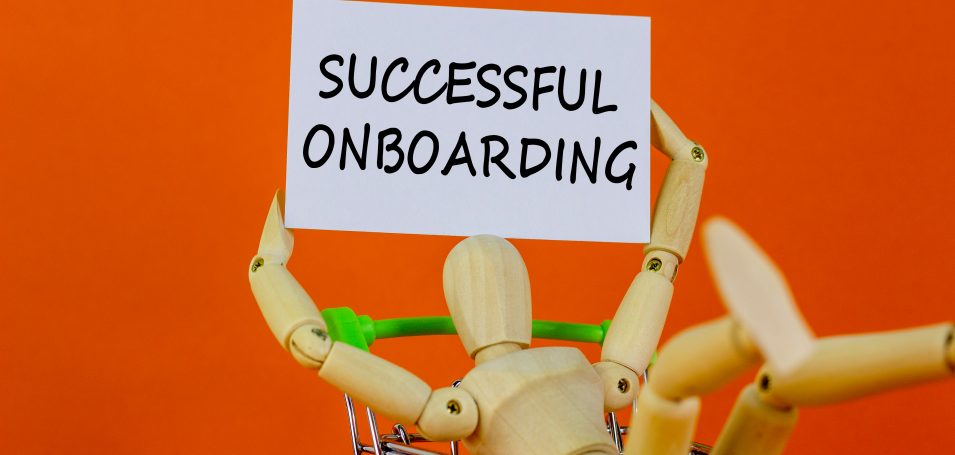By integrating your LMS with Salesforce, you open up new ways for your entire company to embrace the power of customer training.
Even if you don’t have a job where you dip into your company’s customer relationship management system every day, plenty of your co-workers and bosses do. That includes people on your sales team, of course, who use the CRM to stay on top of accounts, contacts, opportunities and all the artifacts and details of interactions with customers and prospects related to doing business with them. But it also includes executives in the C-suite, who experience deep joy – and agony – in monitoring the sales pipeline.
CRM is dominated by one name above all others: Salesforce. According to Forbes, last year Salesforce held almost 20 percent of the CRM market share – twice what SAP had and three times more than Oracle.
Because Salesforce has become such an important tool for every organization that wants to be closer to its customers and prospects, it has developed an amazing marketplace of software – the AppExchange – that enables those companies to extend the functionality of Salesforce into every department that doesn’t already use it. Think of it like Apple’s App Store or Google’s Play store. Places where you can find software to perform any number of operations with your primary device. That additional functionality turns Salesforce into a single point of entry for anyone in your business who needs to interact with customers, turning it into a master source of data.
Every program included in the Salesforce AppExchange has been put through a rigorous review process to make sure it meets security standards and best practices as a business. That includes Thought Industries and its customer training platform.
Understanding the Salesforce LMS Integration Benefits
Integration is done with an application programming interface or API, a bit of code that lets the two programs – Salesforce and your LMS, or a more sophisticated customer training platform – communicate and share data. The whole process of deploying the API should take just a few minutes. Once your LMS administrator has installed the API, you decide which fields in your learning platform to push to Salesforce. The data then exists in both your customer training platform and your CRM.
Those fields might include what courses learners in a particular company have completed, what certifications they’ve earned, and how they scored on particular assessments. Then, when viewing the account record in Salesforce, along with contact details, sales information, and meetings scheduled, your broader organization can view information about their learning progress too.
By working with a learning management system that has been integrated with Salesforce, you’ll improve your customer training in numerous ways. eLearning industry analyst John Leh summed up the benefits of LMS CRM integration this way:
“Salesforce knows who each of your customers are, what they purchased, when they purchased, renewal dates, and any interactions with customer support. Sharing those profile triggers with the LMS adds intelligence for personalized customer training recommendations and learning paths. Well-trained customers renew at a higher rate and spend more on your products and services, over time.”
Let’s peel away the layers and look at each benefit of Salesforce integrating more closely with your learning platform.
(1) Know Your Customers Better
An integration between your customer training platform and CRM provides you comprehensive insight into the content and courses learners are taking at both the contact and account level. By viewing that information through Salesforce, you gain a single point of reference for the entire customer relationship. Knowing how often they visit your learning site, how engaged they are with your training products, how many certifications they’ve earned, what’s needed to get them to the next level of recognition, when it’s time to renew, and related details provides a useful conversation starter with the customer:
“I see that you have 15 more people who have achieved MVP status. That officially places your company into our platinum level, which comes with extra spiffs…”
(2) Help Customers Visualize the Future
Your sales and customer success teams will be able to come across as well-informed and more customer-focused in their interactions when they can recommend appropriate pathways for learners in the customer’s organization based on what individuals have already accomplished in your learning site:
“For this next renewal, you might consider enrolling at least three of your technicians into the Level II training since that will prepare them for the next generation of the software, which rolls out in the fall. I see that Jill, Tiana and Joseph have all finished their level one course. You might consider them as candidates to take the next step in their training…”
(3) Show Your Company the Value of Customer Training
As Leh points out, the best customer education produces stickiness. When customers adopt your products and services successfully, they tend to invest more heavily in it. Phil Nanus, Vice President of Customer Success Research for the Technology Services Industry Association (TSIA), has pointed out that customers will only renew contracts with you “if they continue to receive value from their purchase.” And those customers that are deriving value from your products and services “are most likely to expand their spending with your company and renew their contracts.”
That may be something you already know. But by making that link visible to others in your organization through a LMS Salesforce integration, you help the rest of your organization understand the connection between training and success. By giving your executives visibility into learning metrics, you show the positive impact quality training delivers:
“Yes, in addition to our awesome product and our amazing support team, we also have this incredible learning engine that furthers the positive experience our customers get with us.”
(4) Gain Insights You Didn’t Expect
By mixing sales-related data about the customer and the learning programs they participate in, you might have unexpected insights. Those data-driven sparks of understanding could, in turn, lead to additional revenue opportunities — new product lines; variations in training format; distinct preferences by account or industry segment, organizational role or sales outreach timing.
There’s much to be gained with an LMS CRM dynamic duo, and even more with a more modern customer training platform. The right LMS for Salesforce includes these features:
- The ability to invite contacts individually to your learning site from within Salesforce
- The ability to sync learners with their Contacts Account in Salesforce based on a unique identifier such as the learner’s email address
- The ability to quickly select the learner data fields that will appear in your contacts for Salesforce
- Simple integration that doesn’t require IT assistance for set-up
These aren’t nice-to-haves. They’ve become a necessity. By choosing a learning platform that has found its place in the Salesforce AppExchange – a highly covetable spot – you’ll know that it has undergone a demanding process and adheres to the strictest requirements set by the CRM leader. By helping your organization see the full breadth of your customers’ interactions, your team will be positioned to react appropriately and effectively to incoming requests.



